By Doug Navarra
Many years ago, having just discovered the potter’s wheel, my high school woodshop teacher saw my interest. He himself, a wood sculptor, invited me to see an exhibition of Toshiko Takaezu at our hometown Heckscher Museum in Huntington, NY. The year was 1971; I would have been either 15 or 16 years old and only been on the potter’s wheel for several months. At the time, I was not awakened to the fact that I would become an artist myself. The Toshiko show would become one of the first museum exhibitions I ever saw.
Consequently, we were both astounded and have admired Toshiko’s work ever since. That was a seminal moment in my life. My teacher, Richard Shanley, became my facilitator, friend, guide, and one of the people who helped point the compass of my life. I will be forever grateful to him for showing me the way. So, upon learning about the Toshiko retrospective ‘Worlds Within’, showing in Long Island City, N.Y., at the Noguchi Museum, he was the first person I thought of. Of course, I knew he would want to see it. At 90 years old, and now 53 years later, we went together to see this show. This became a “full-circle” experience with him. We enjoyed seeing this show together, creating a memory which I will have for the rest of my life. Suffice it to say, I’ve had a chance to look at Toshiko’s work for some time over the course of a few decades, and I have come to write this essay with a different perspective and understanding of her work.
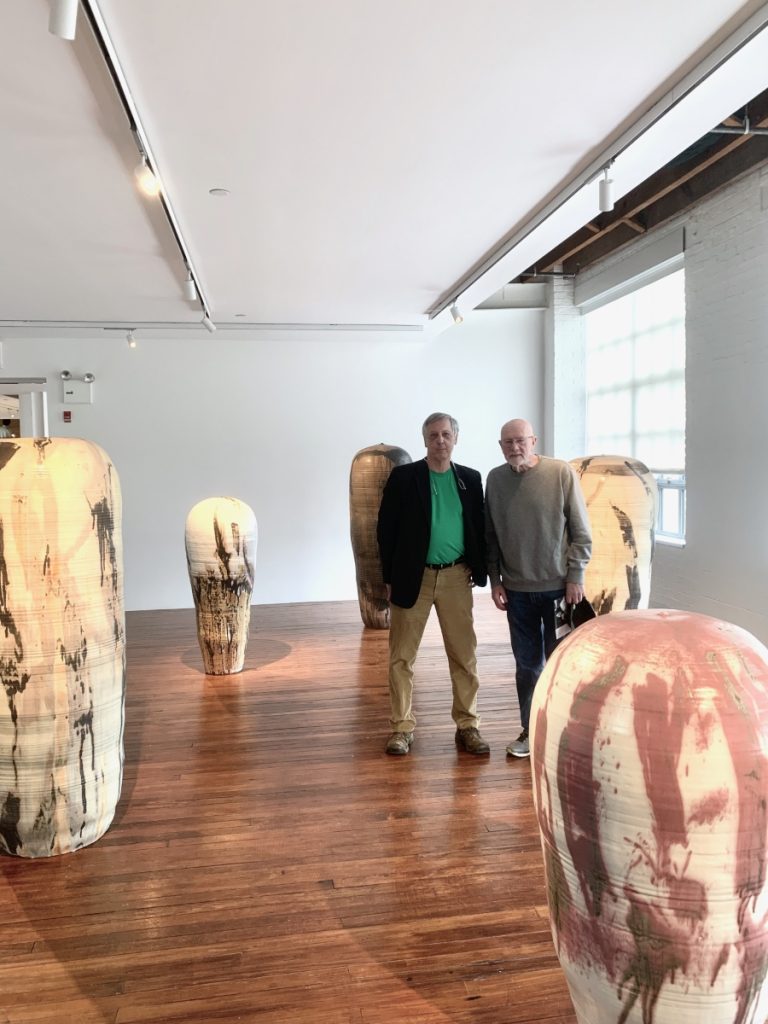
I’d like to start with James Jensen, Curator of Contemporary Art at the Honolulu Museum of Art, who was also very well acquainted with Toshiko’s work:
Toshiko Takaezu’s personal sculptural vision was shaped by the vessel tradition out of which it grew. Her earliest pieces are utilitarian ware – bulbous teapots and bottle vases – but these gradually metamorphosed into more eccentric shapes, multi-chambered and multi-spouted vessels in which expressive, sculptural qualities outweigh any potential for practical use. Through a continuous reductive process of experimentation involving refining and simplification of contours, surfaces and proportions, Takaezu arrived at the form which has become distinctly, unmistakable her own expression – a rounded, “closed form” with a vestigial neck and small duct-like opening in the top to allow interior gasses to escape during firing.1
Jensen may have been the first person to characterize the small opening of Toshiko’s forms with the term “vestigial”, meaning the visual evidence of something that once existed, the remainder of some condition, and in this particular case the suggestion of a spout or the vessel’s opening. But what has always interested me is what is never discussed much in these forms, the darkness within.
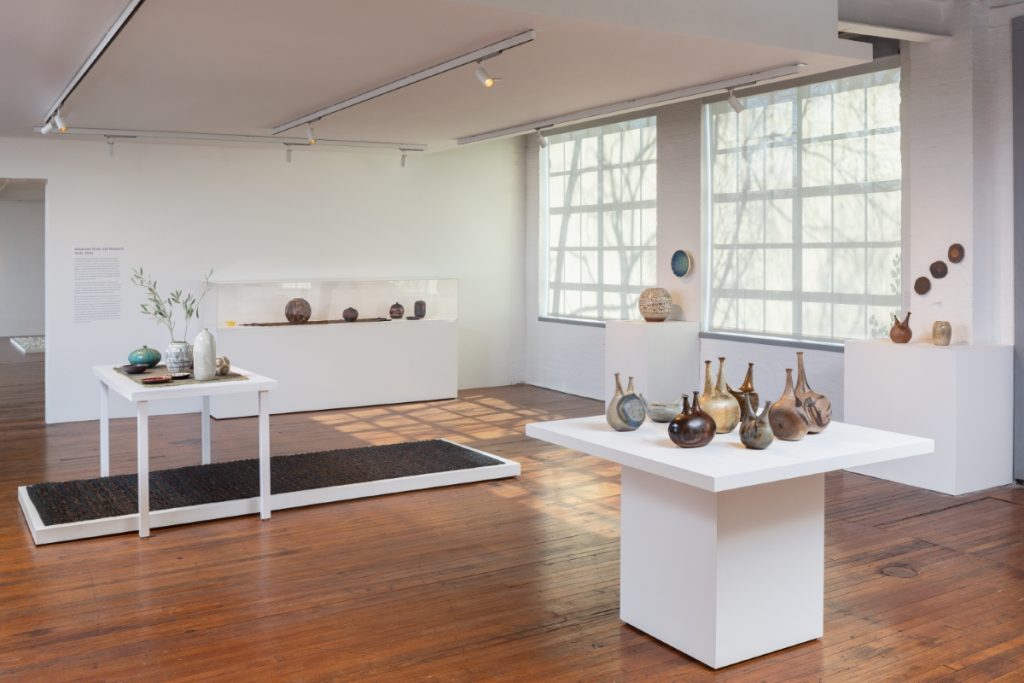
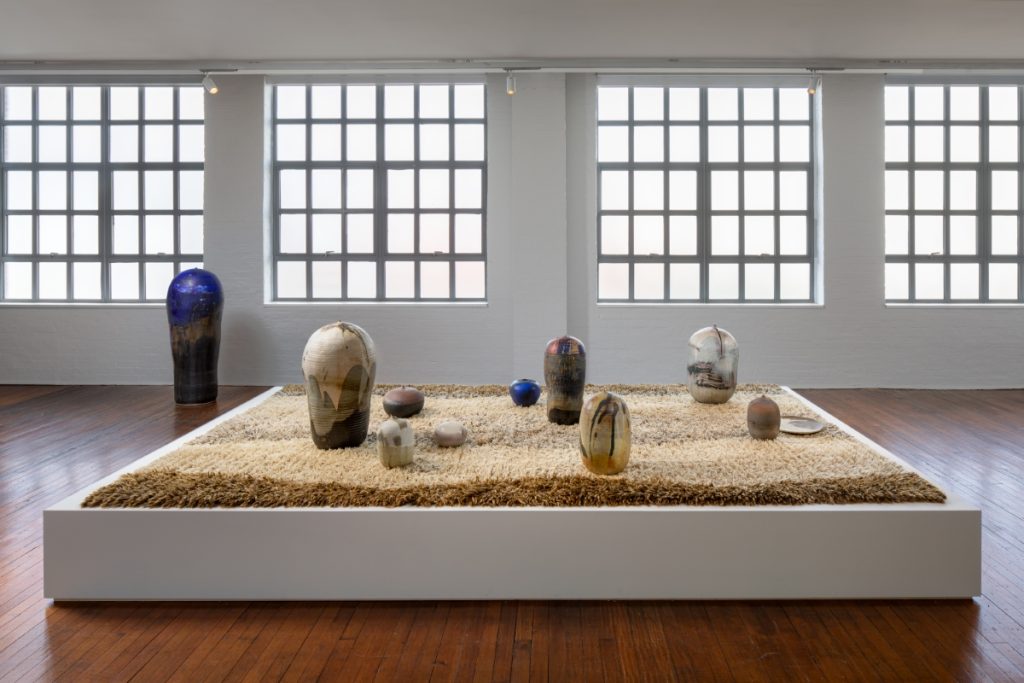
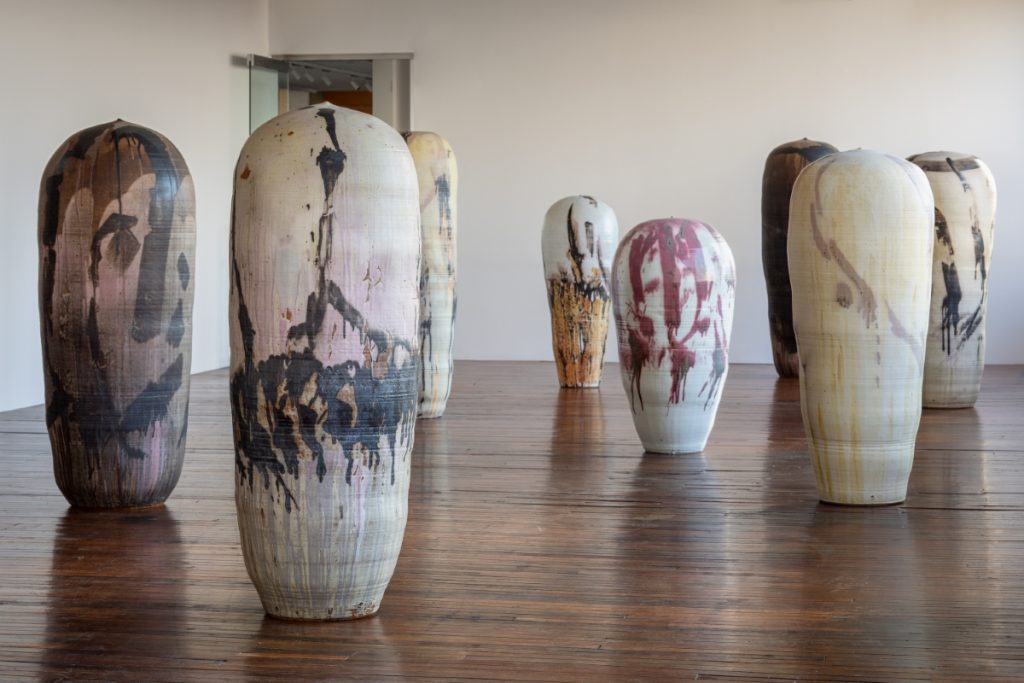
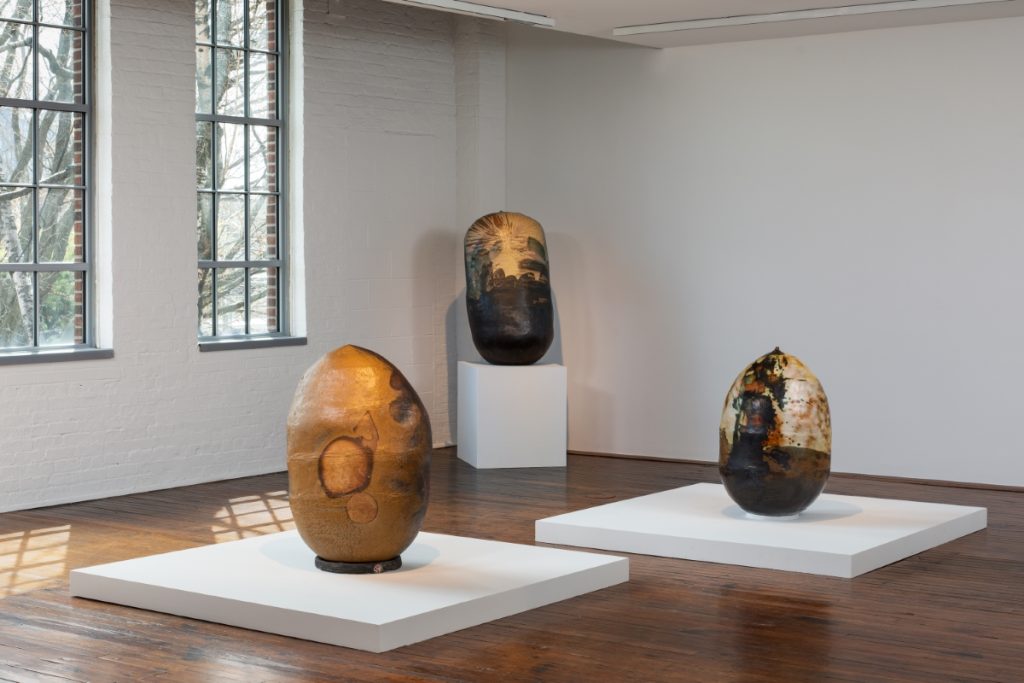
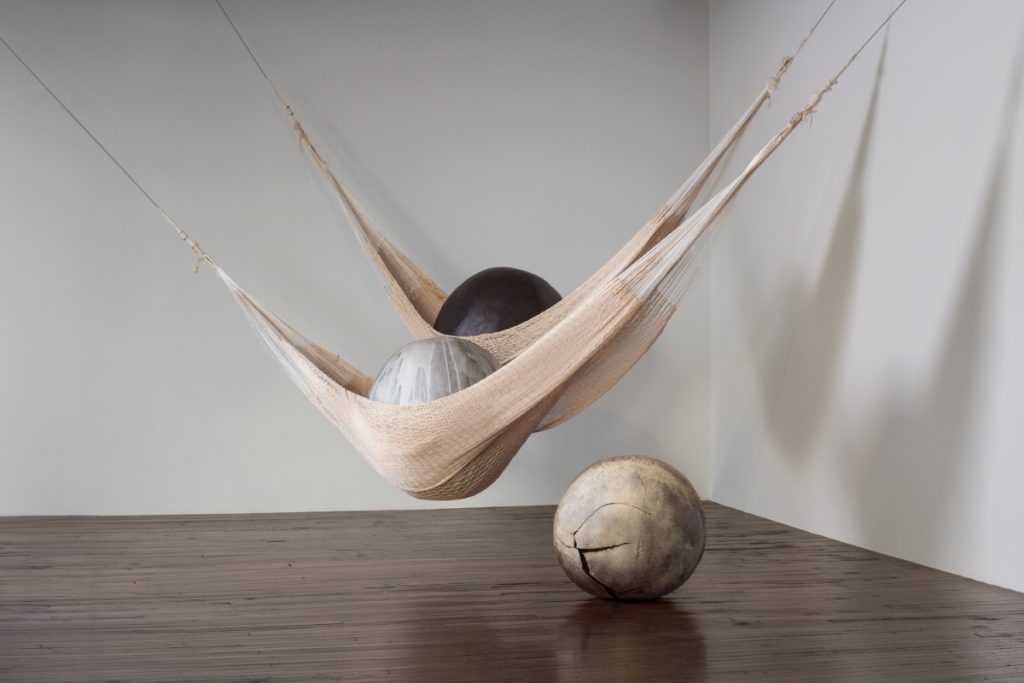
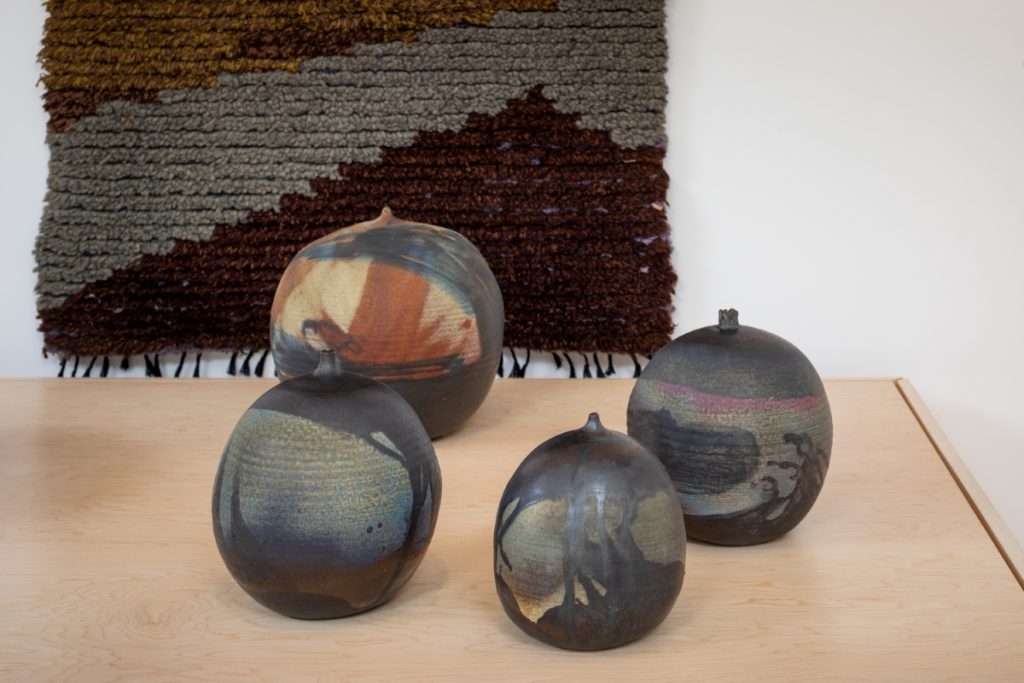
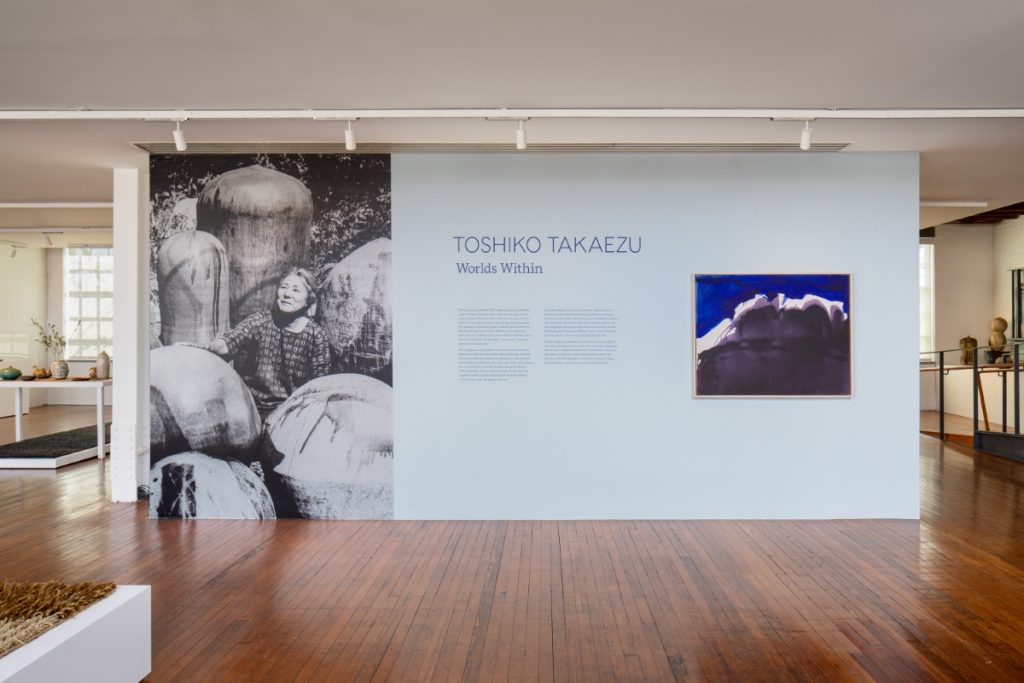
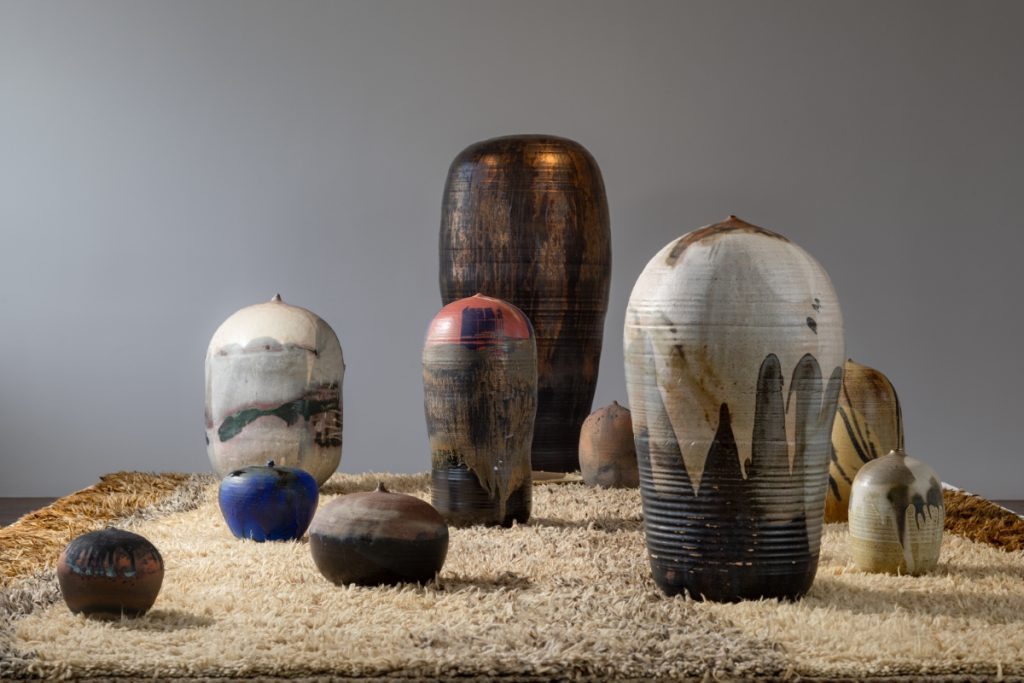
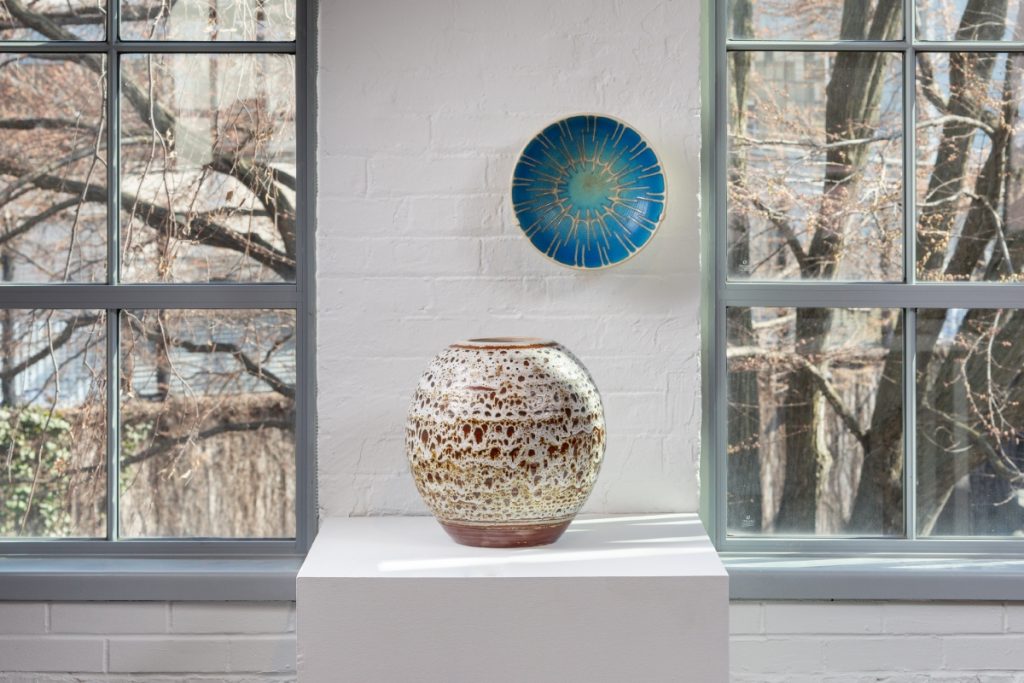
As if these tiny openings in Toshiko’s pots were a keyhole in the night, these small apertures are the narrow passageways where darkness is employed and her curiosity takes flight. As a diminutive portal filed away by a curiosity of ancient whispers, it is in itself a journey into a dark obscurity in order to find meaning. We exhaustively speak about the exterior of Toshiko’s pots being an abstract painted canvas for her expressionist glazing. But sculpting the darkness within has been very much overlooked, and it is essentially an even more meaningful canvas where introspection is painted on the inside of cave walls.
It is here in the darkness of this space where invisible stars cradle swirling galaxies and where the mysteries of the darkness are apprehended by the needle of truth. It is not merely an absence of light, but a space where these captivating formations of stardust create mesmerizing spirals in the vastness of a dark space.
It is through this tiny little opening in her pots that she becomes elevated, her mind sculpting this darkness, a gateway into the divine realm of elation and bliss. Over and over again, she will create these “closed forms”.
Toshiko’s work embodies a profound poetic inspiration, that is the truth. Darkness cultivates our cognitive process in this unknown territory that presides within her spheres. Her exterior blackened surgent glaze marks rake the pale cheerless tans that become the life-fields dotted with frozen stubble. When a visceral avalanche of blue-blood glaze appears like currents of thoughts fingering themselves around the exterior of forms, the eddying over this darkness within the form becomes a grandiose thing. I think we stand before something greater than ourselves.
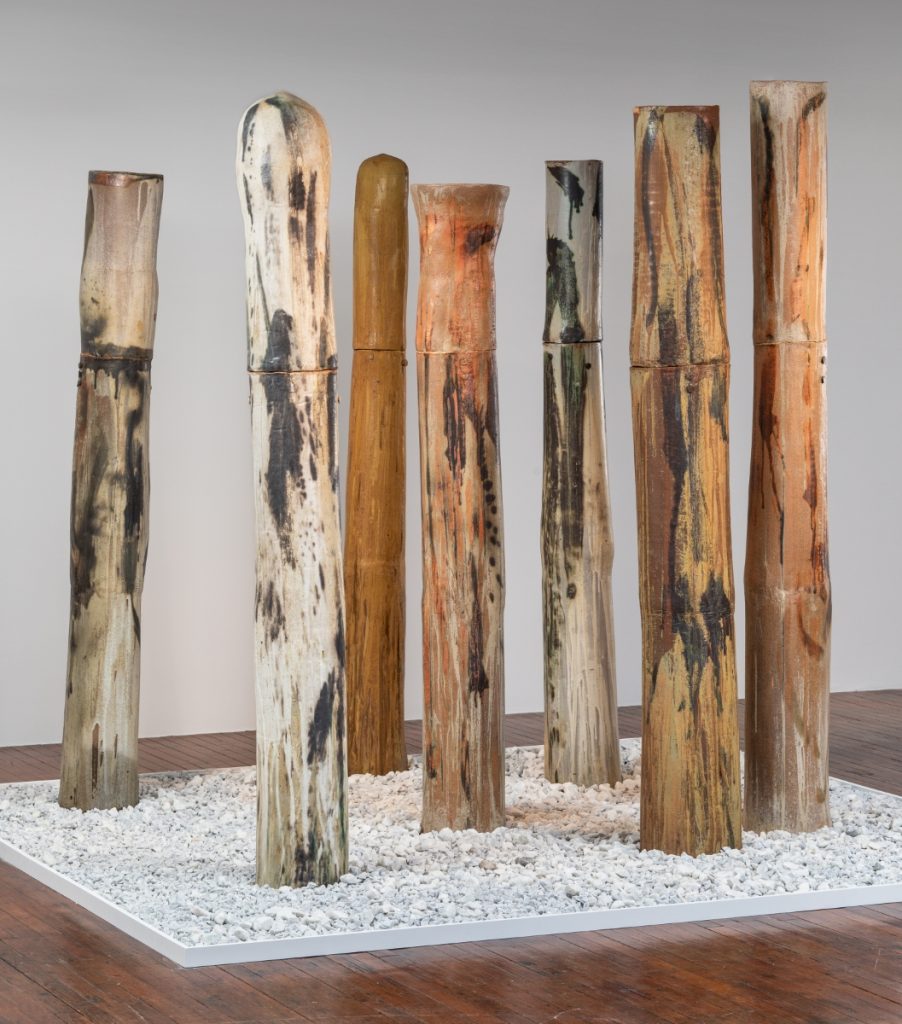
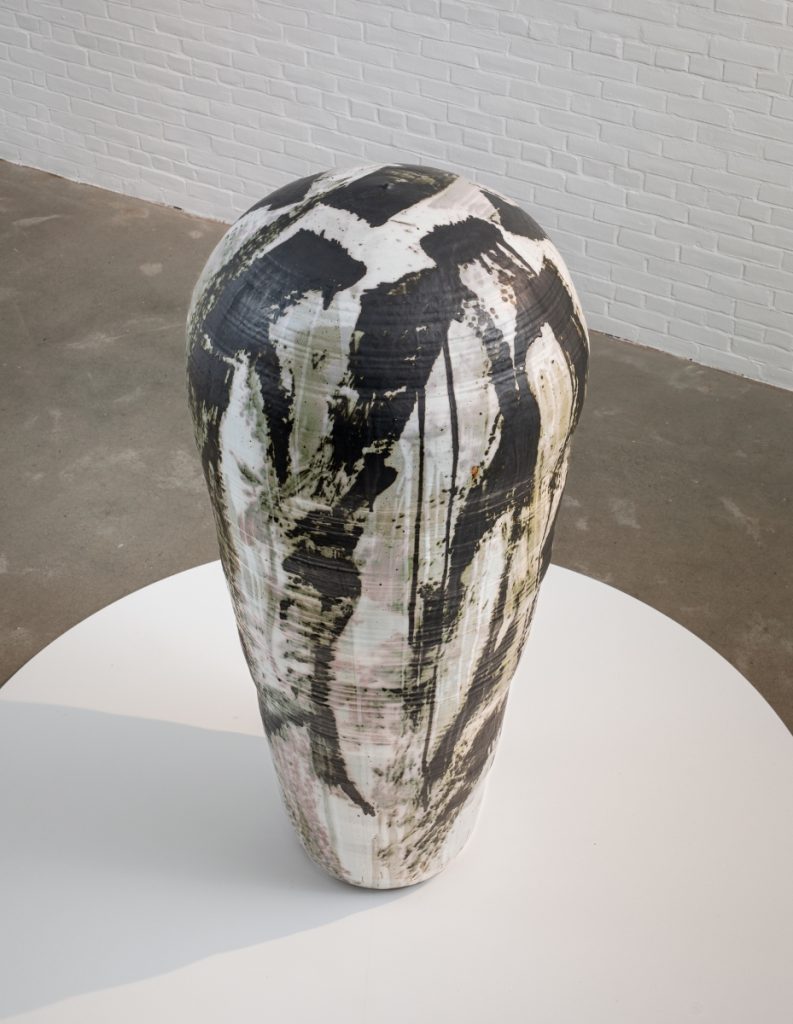
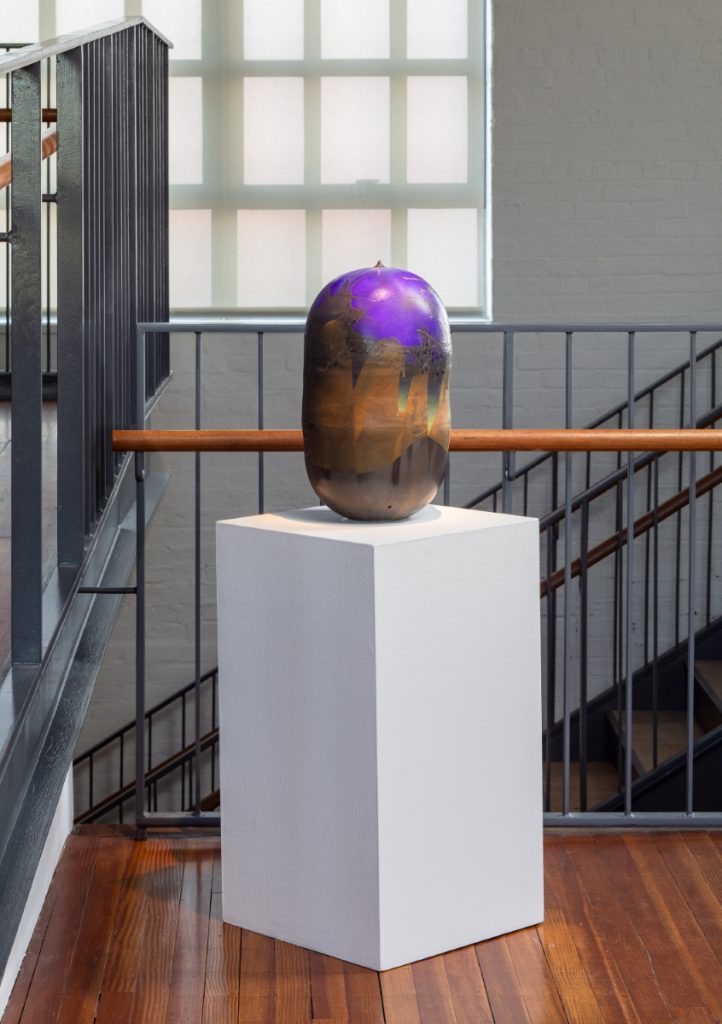
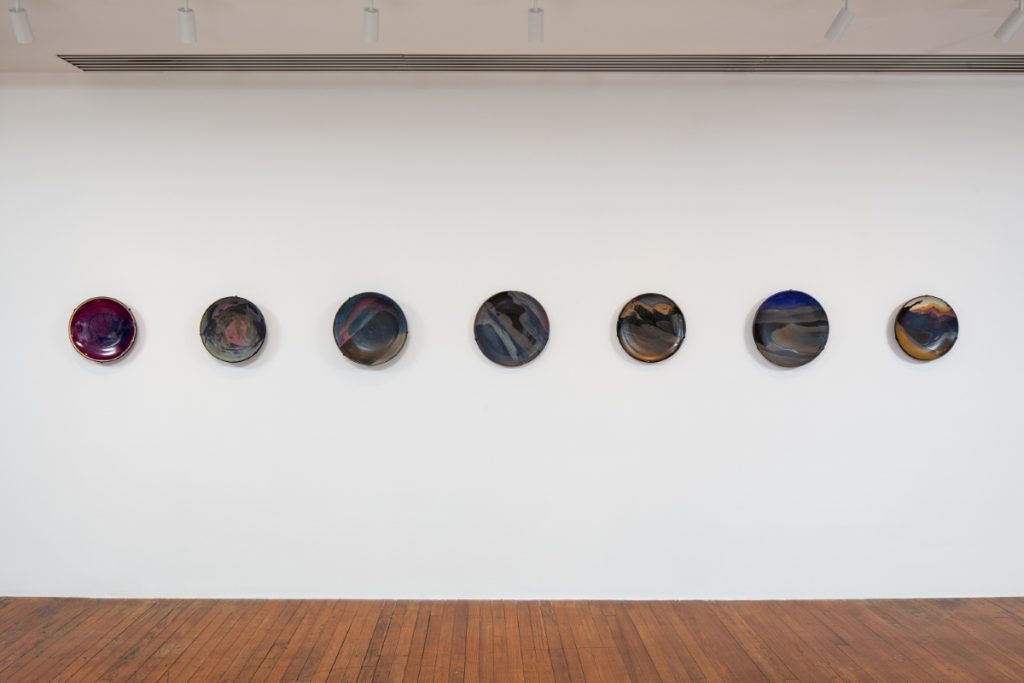
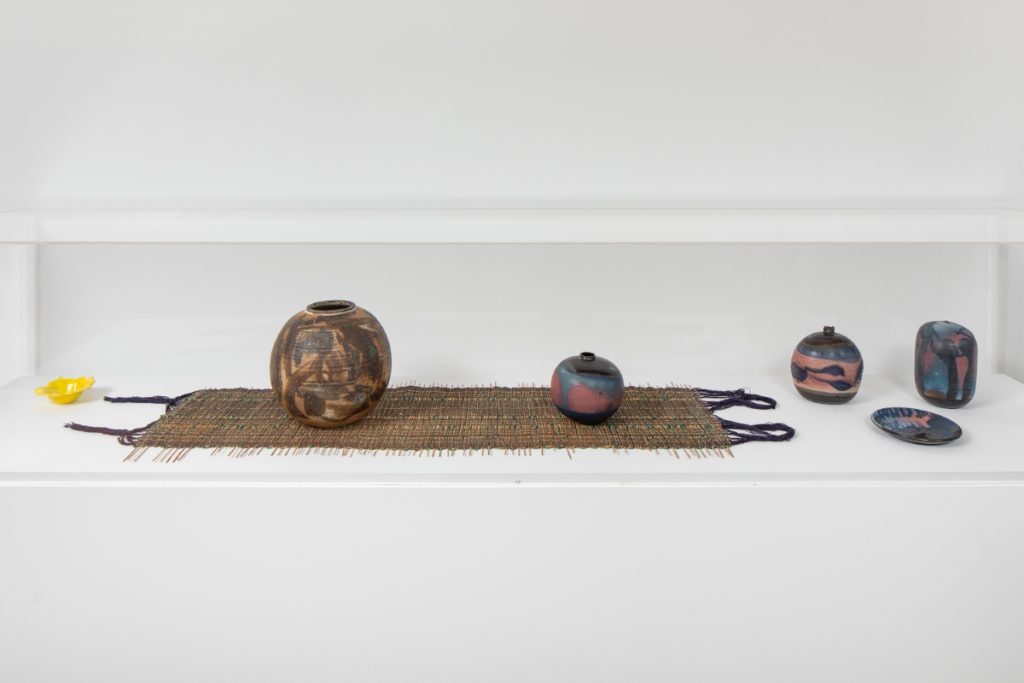
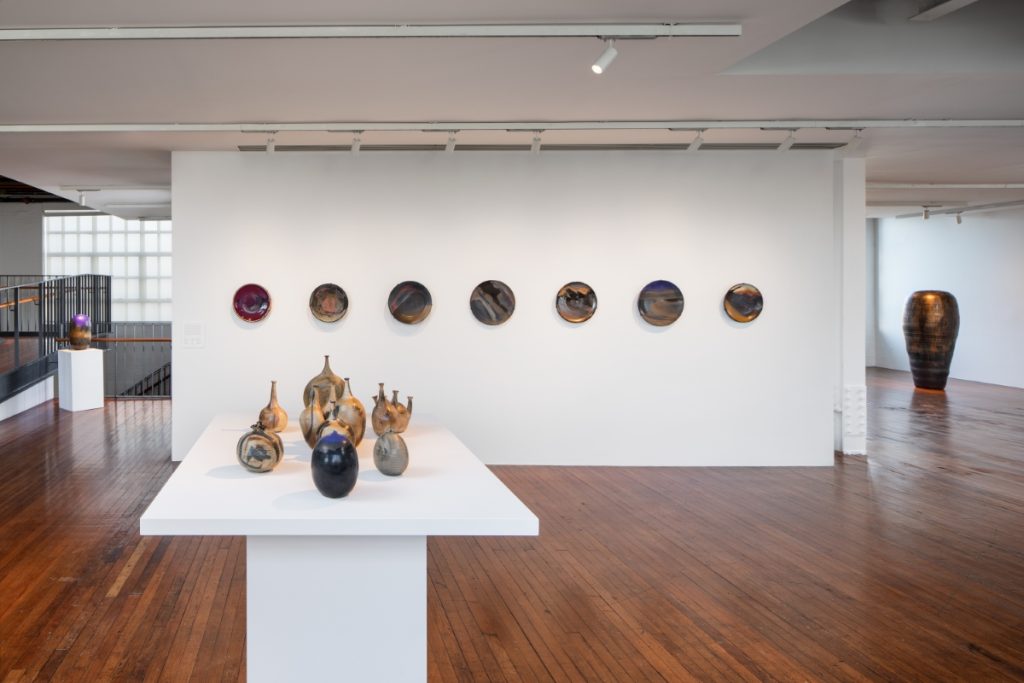
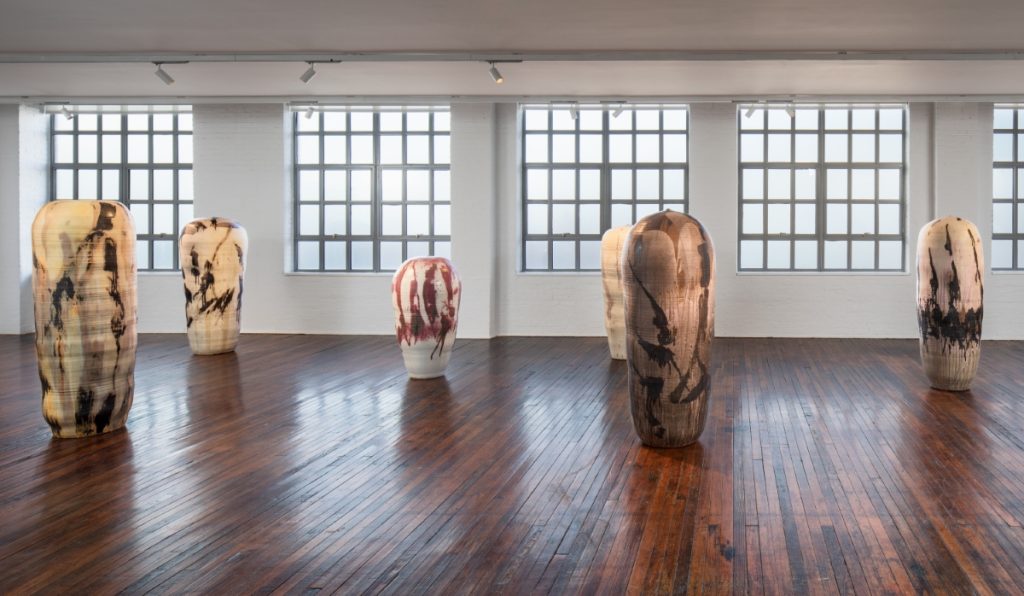
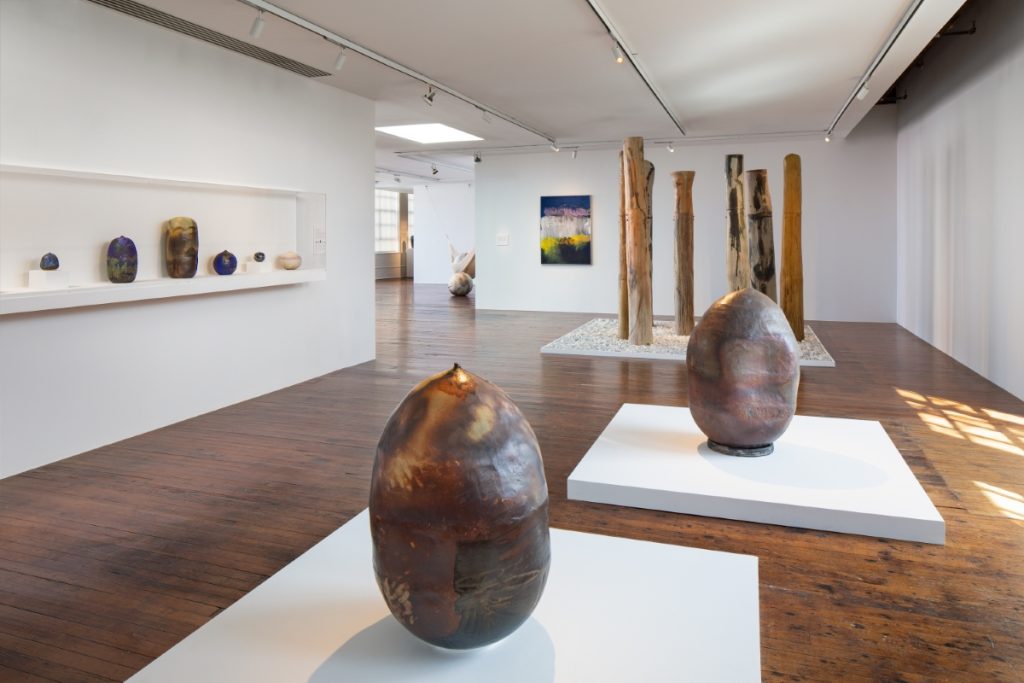
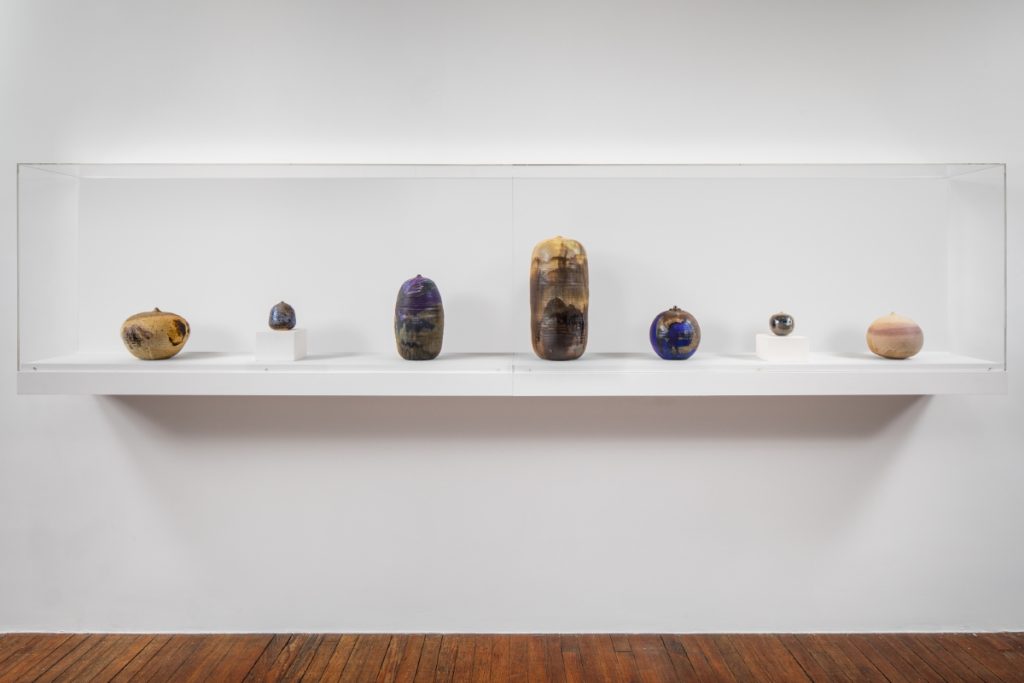
It is through this tiny little opening in her pots that she becomes elevated, her mind sculpting this darkness, a gateway into the divine realm of elation and bliss. Over and over again, she will create these “closed forms”. But here, she acts as a mediator between human consciousness and the archetypal, transpersonal realm. This darkness is spatially a personal temenos beyond our ordinary grasp of existence. It is a place of keeping for her own ‘soul flight’. Through these very intense personal revelations of making, she connects with the universal, archetypal dimensions beyond conventional time and space. In this darkness, she encounters the generative forces at their source, an awakening to the authentic self, the essence of ‘all soul’. This being rooted as a type of numinous experience; it fosters a specific mode of existential awareness. One can think of this darkness as a psychic structure, this underpinning functioning as the organizing principle, much like a ‘magnetic field’. What visibly becomes of it are the cultural, ethnic, and sociological, interpretations of her work, derived from the favors and deep recesses of her conscious and unconscious mind. These are not just pots; these are not just ceramic spheres; these are gateways that illuminate tradition and the origins of meditative practice.
This concept of “clear darkness” might seem paradoxical to us, but for Toshiko, darkness was just a veil. After years of expression and being able to manipulate this darkness, she acquired a transparency and understanding in sculpting it. Darkness becomes clear when its inherent limitations are exposed. Understanding the truth in this darkness, understanding the truth in its forms, leads us from that tiny little exterior opening precipice of her pots, to hear her inner philosophical creation song. This is a song of freedom.
Given her modesties, there are in fact all sorts of extra visual complexities seen in glaze manipulation. There is a compounded, exponential, life-long understanding of how glazes work and overlap to give specific results. From mountains to atmospheres to oceans, to landscapes and rivers, the visuals of her aesthetic glaze vocabulary sanctify and purify. Her judicious simplicity applies, contrasting our own much more potentially complex personal decorum. Darkness within was not something for her to be feared or suppressed but rather a facet of human experience that deserved acknowledgement.
I can’t help but think of the shamans of early mankind as her predecessors who squirmed their way into the narrowest of dark passageways to eventually find the underground “cathedrals” of prehistoric man.2 As in the antiquity of early man, there was an ephemeral light that flickered upon cave walls. There within, our ancient forbearers traced the embryonic glyphs of early writing. In these dim hollows of primordial cave exploration, an ancient impulse stirred—a yearning to etch upon the walls, to mold the dark obscurity into form. Does any uncertainty linger that a realm of pre-life devours the darkness within those subterranean sanctuaries, a twilight of existence before existence itself? Drawing parallels between Takaezu’s work and Paleolithic man’s exploration of caves is not immaterial; it enriches our understanding of both artistic endeavors. The darkness within her pots, the darkness within the caves, serves as a metaphor for the human condition—our quest for meaning, our hidden depths, and our connection to the world around us. She never spoke much about this darkness but, like the Paleolithic explorers in ancient history, our comprehension of it emerges through retrospective analysis.
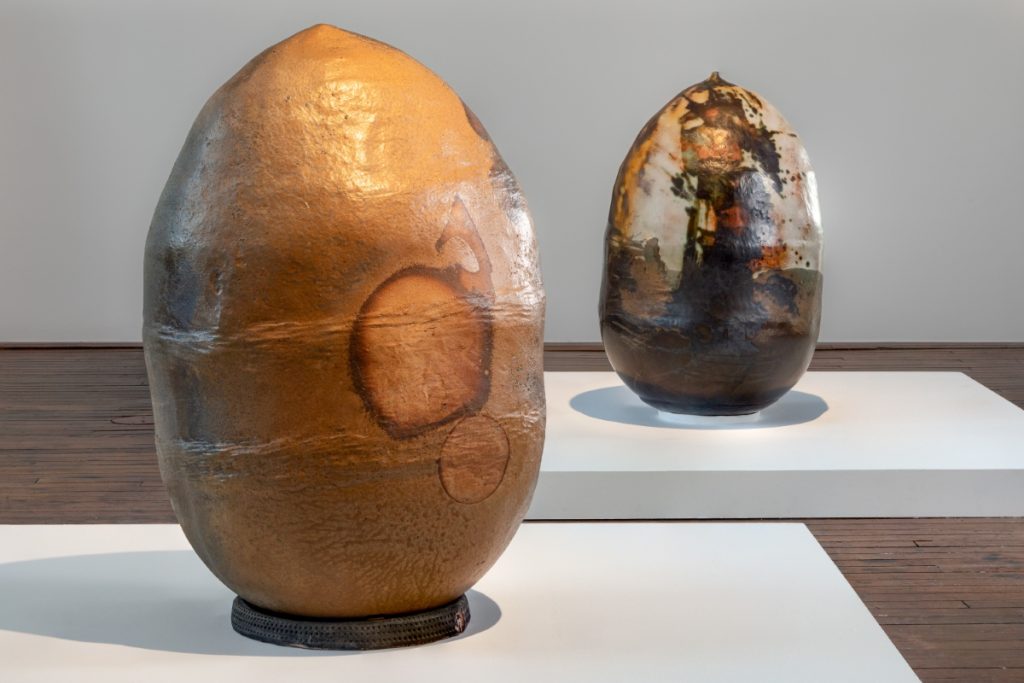
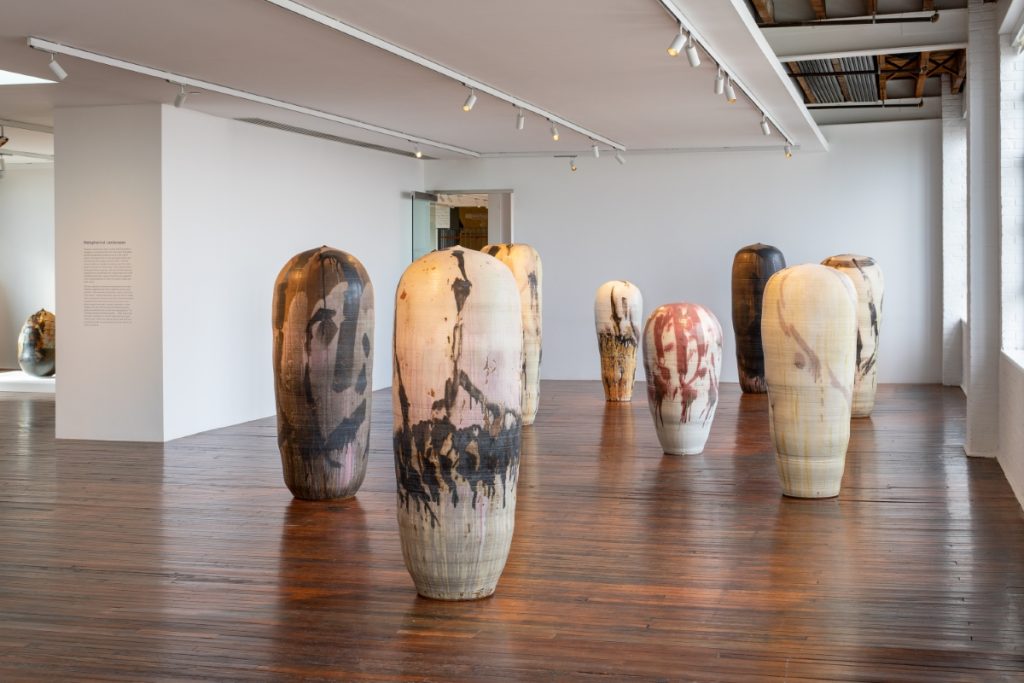
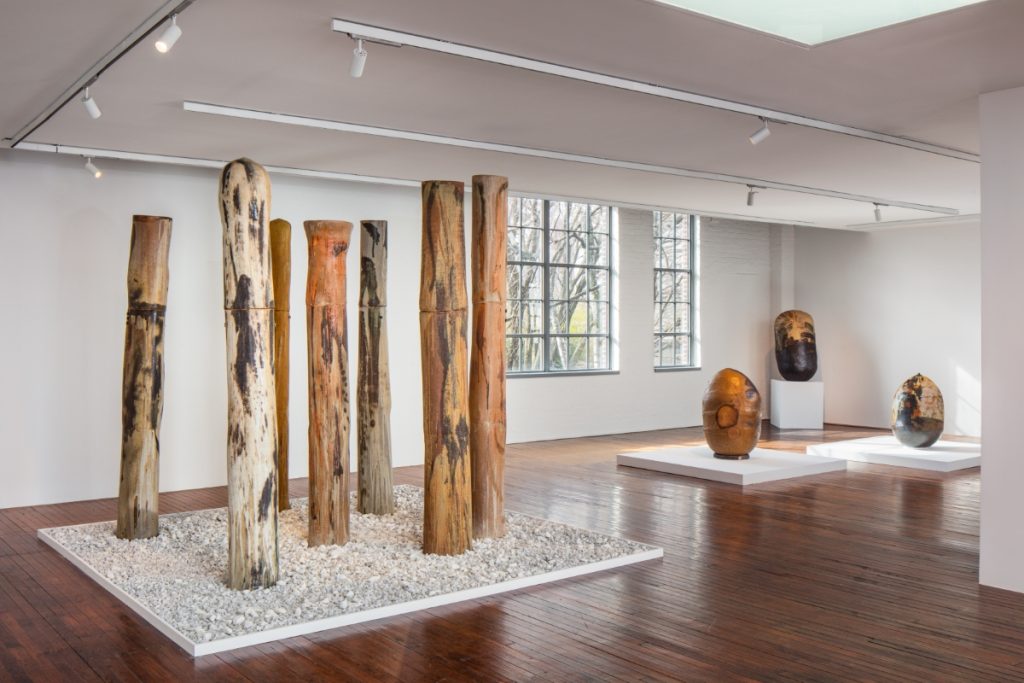
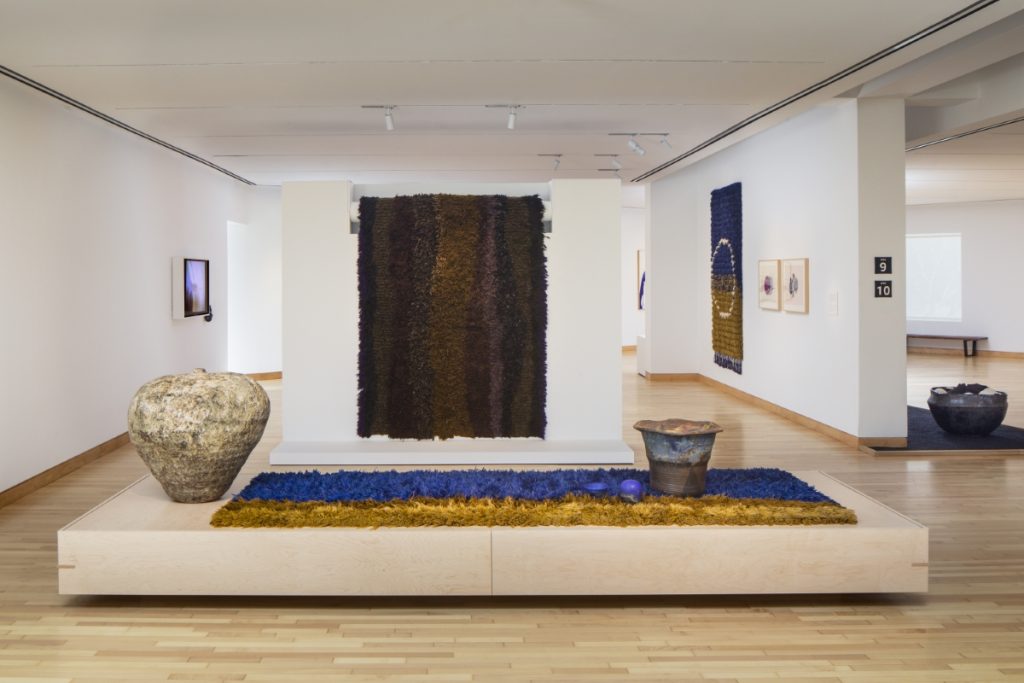
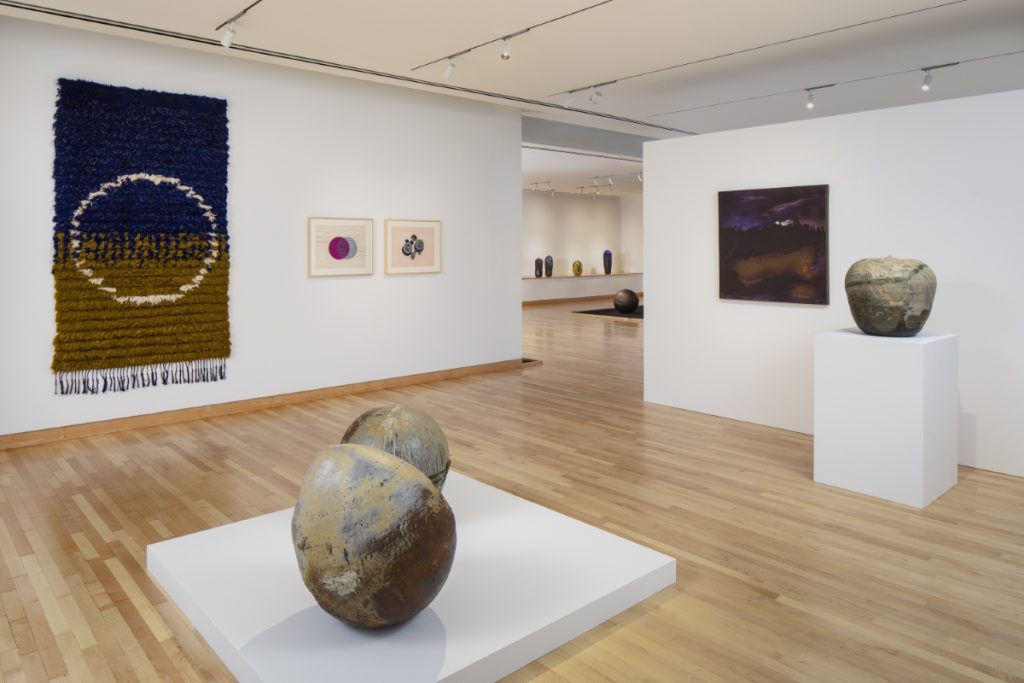
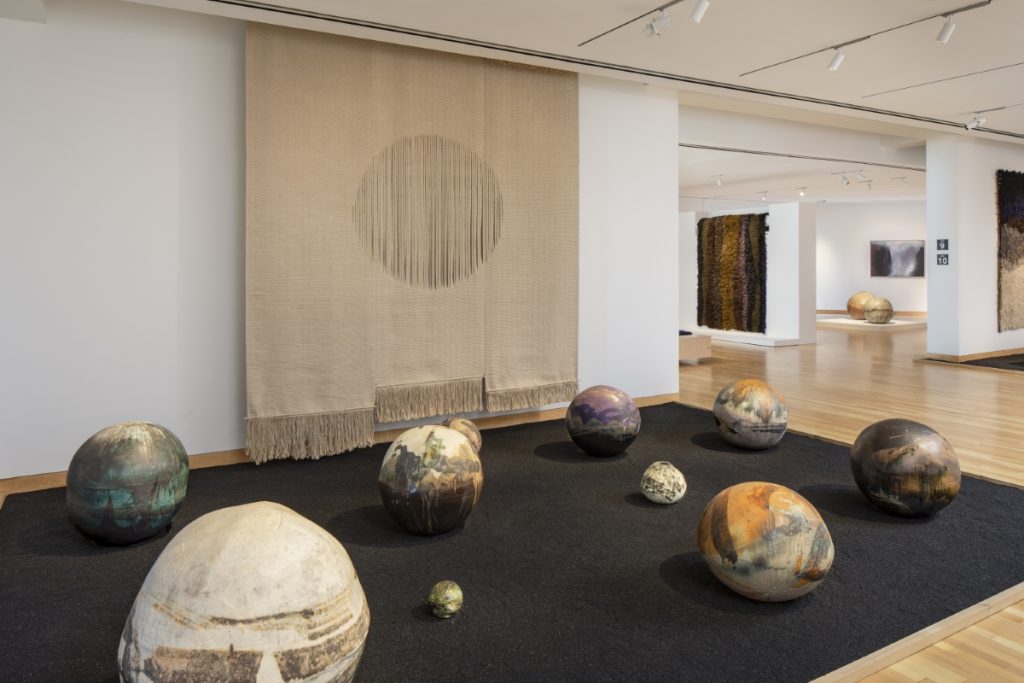
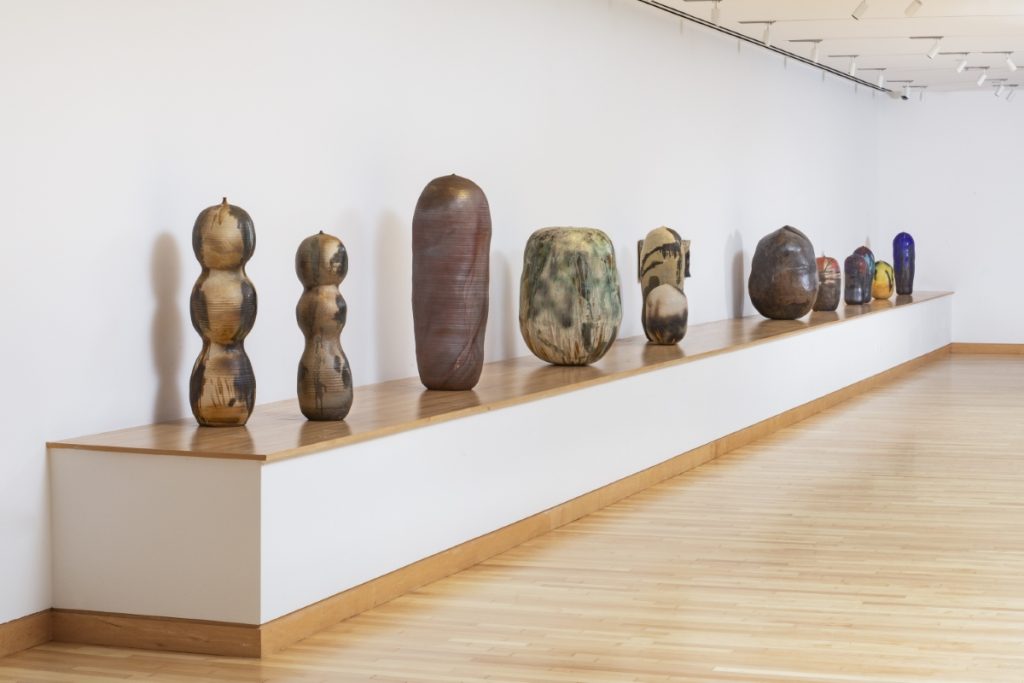
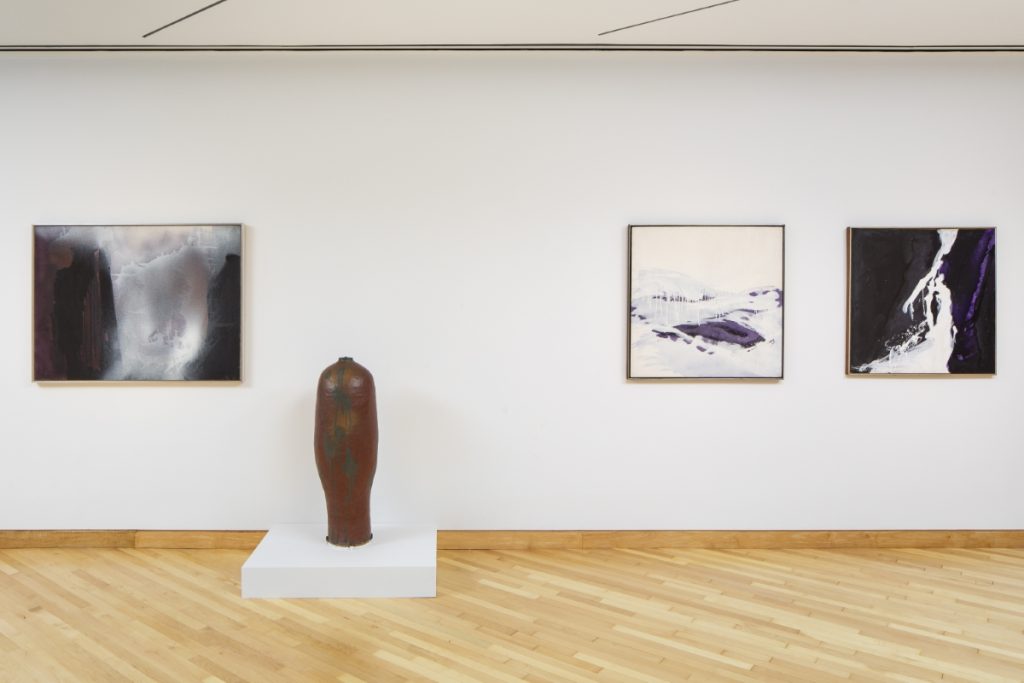
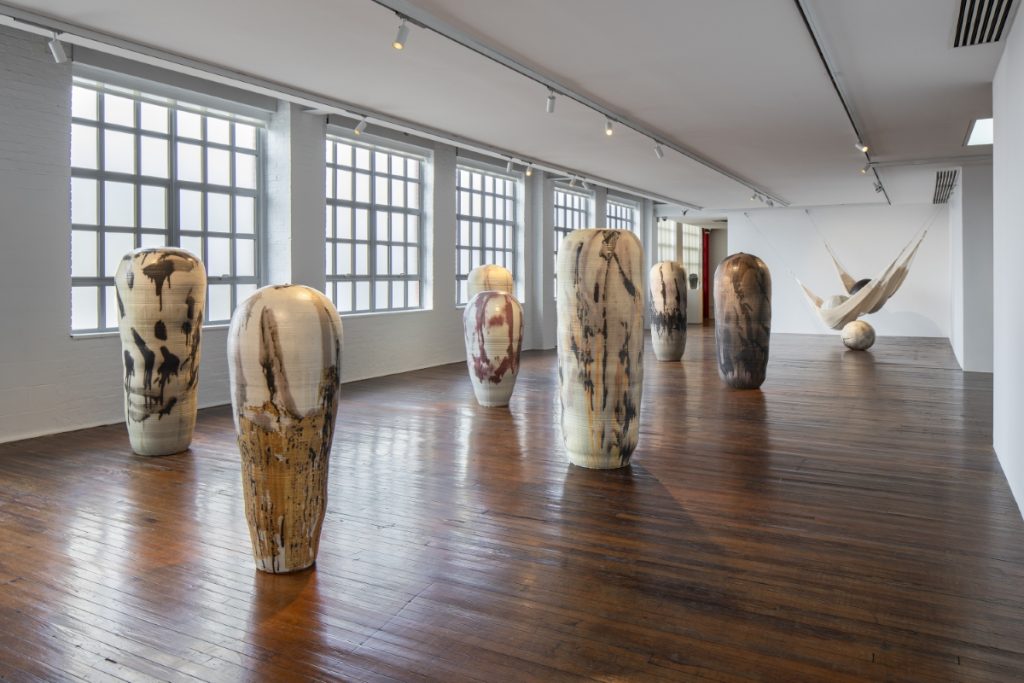
In these depths of Toshiko’s pots, it appears that her imagination intertwines with shadow, sculpting the darkness within. It is essentially a personal method, but one of continual renewal. Glimpses of darkness drift through her mind, merging sanity and substance like a deck of tarot, hinting only at nascent thoughts yet to find their final purpose. I am speaking of pots in the process of their making. These are the portents of fetal ideas, waiting to discover a final destination where their firing births a form. This is the darkness of antiquity, a sinter world of demarcation, replacing temporality with eternity, and timelessness. Within, this landscape gleams with lucent growths, where leached formations whisper of secluded beauty’s troths. Hands meet destiny beyond the maker’s threshold, a place where Toshiko unfurls the whispers from the loom of Creation. We seem to take for granted this quiet place of her personality, an ambiance of a particular world of her very own. However, Toshiko beckons our initiation into these shadows of her inner realm, where in the darkness she pleads the truth, and we begin to understand there is a maternal core. As in Plato’s Republic, the return into the darkness of the cave symbolizes the duty to enlighten the others who were left behind and allow them to see beyond their limited perspective.
This journey inward prompts us to shift our focus to the spiritual language laced in the depths of her imagination. Our commonplace banalities, our worldly, ensnared emotions, in this theater of darkness remain impervious, guarded by an imperceptible barrier that forbids any such profane intrusion.
In a sense, the viewer does not have the reddened vocabulary to completely understand this darkness in context. Actually, it’s not a necessary requirement. Instead, what appears is a preference for a new beginning. Think of it as the ultrasound image on a computer screen of a heartbeat within the womb. Your born thoughts become the outside-of-the-pot conversation in the light and miracle of a begotten consummated form.
Doug Navarra is a visual artist who has an extensive background in working with clay. He lives in Hudson Valley, New York.
Toshiko Takaezu: Worlds Within is on view at The Isamu Noguchi Foundation and Garden Museum, New York, between March 20 and July 28, 2024. The retrospective is organized by The Isamu Noguchi Foundation and Garden Museum with assistance from the Toshiko Takaezu Foundation and the Takaezu family. It is co-curated by art historian Glenn Adamson, Noguchi Museum Curator Kate Wiener, and composer and sound artist Leilehua Lanzilotti. The exhibition was conceived and developed with former Noguchi Museum Senior Curator Dakin Hart. The show at The Noguchi Museum features approximately 200 works from private and public collections around the country. Following its presentation at The Noguchi Museum, the exhibition will travel to several additional venues across the United States. Planned venues include the Cranbrook Art Museum (October 9, 2024–January 12, 2025), the Museum of Fine Arts, Houston (March 2–May 18, 2025), the Chazen Museum of Art, University of Wisconsin-Madison (September 8–December 23, 2025), and the Honolulu Museum of Art (February 13–July 26, 2026).
Ceramics Now is a reader-supported publication, and memberships enable us to publish high-quality content like this article. Become a member today and help us feature a wider range of voices, perspectives, and expertise in the ceramics community.
Captions
- Installation views, Toshiko Takaezu: Worlds Within, The Noguchi Museum, New York, March 20–July 28, 2024.
Photos © Nicholas Knight. Courtesy of The Noguchi Museum
Works by Toshiko Takaezu (1922–2011) © Family of Toshiko Takaezu
Footnotes
- Jensen, J. (1995). Toshiko Takaezu Retrospective, The National Museum of Modern Art, Kyoto, Japan
- Ryan, R.E. (1999). The Strong Eye of the Shaman: A Journey into the Caves of Consciousness. Inner Traditions International. A general reading of this book was indispensable especially the first three chapters and what Paleolithic man encountered going into the depths of the caves.


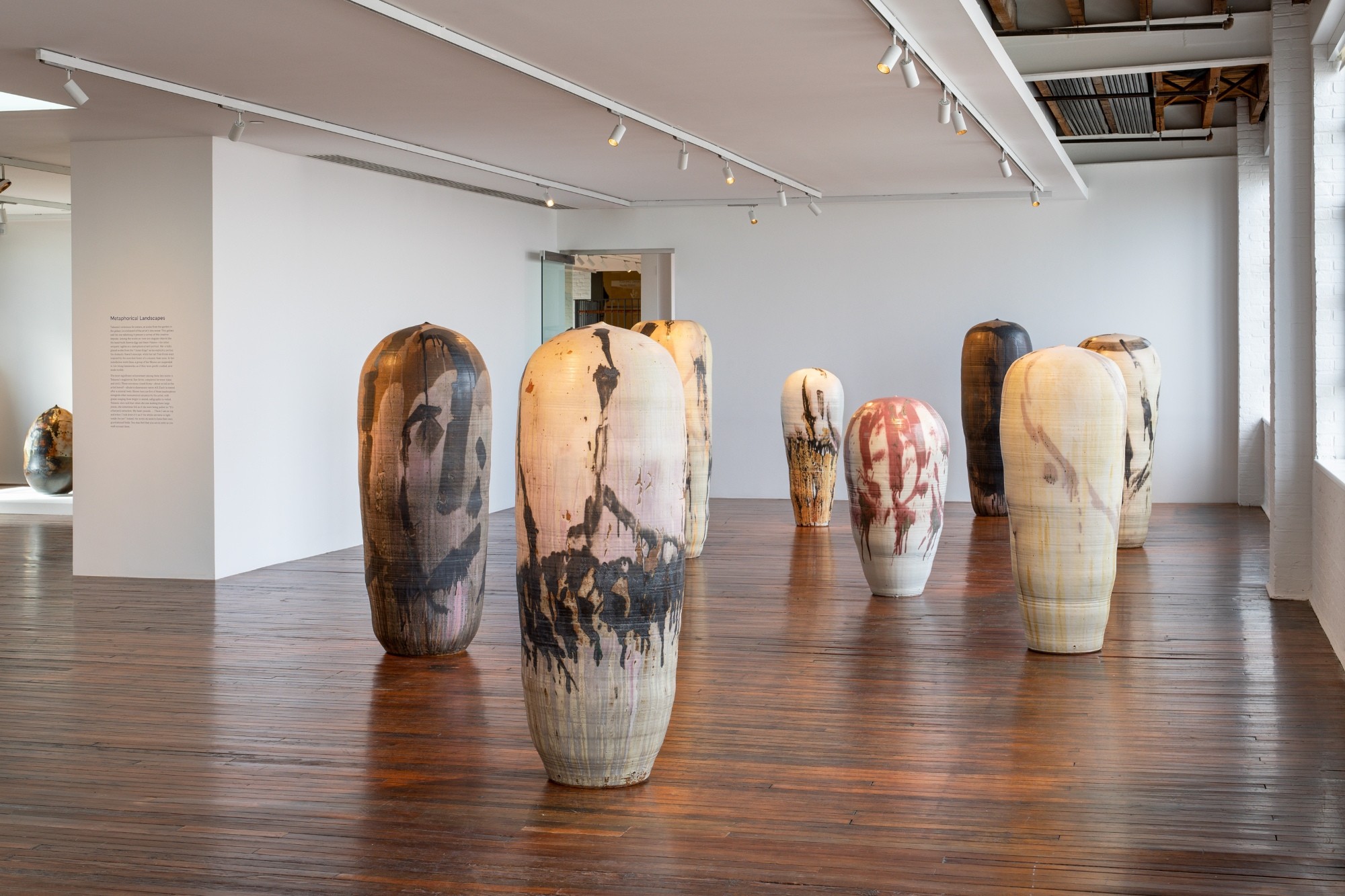















Comments 1